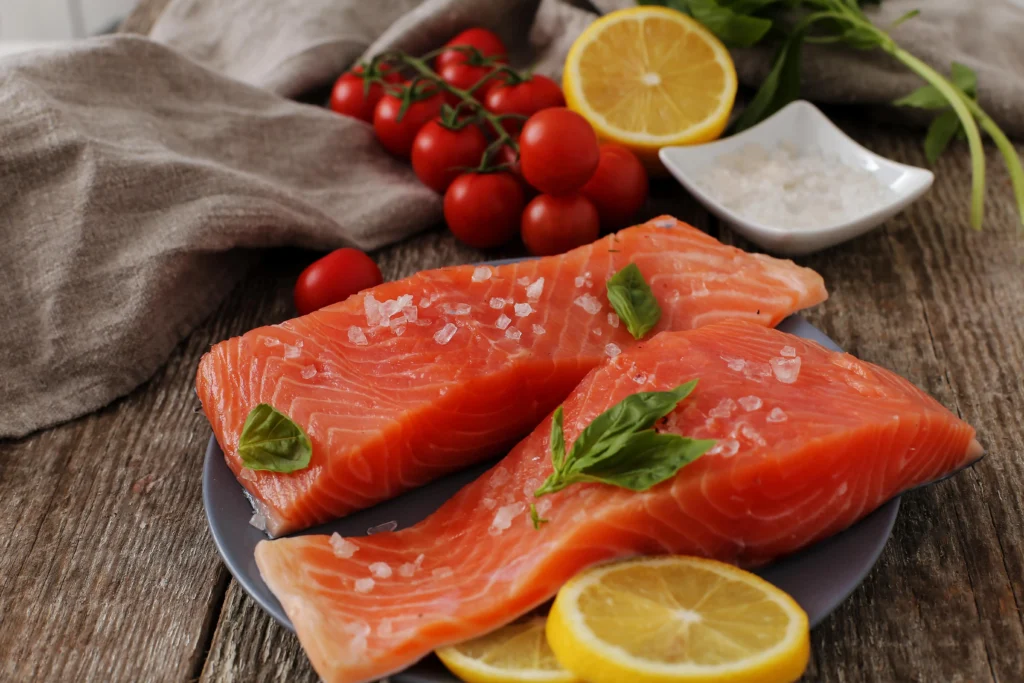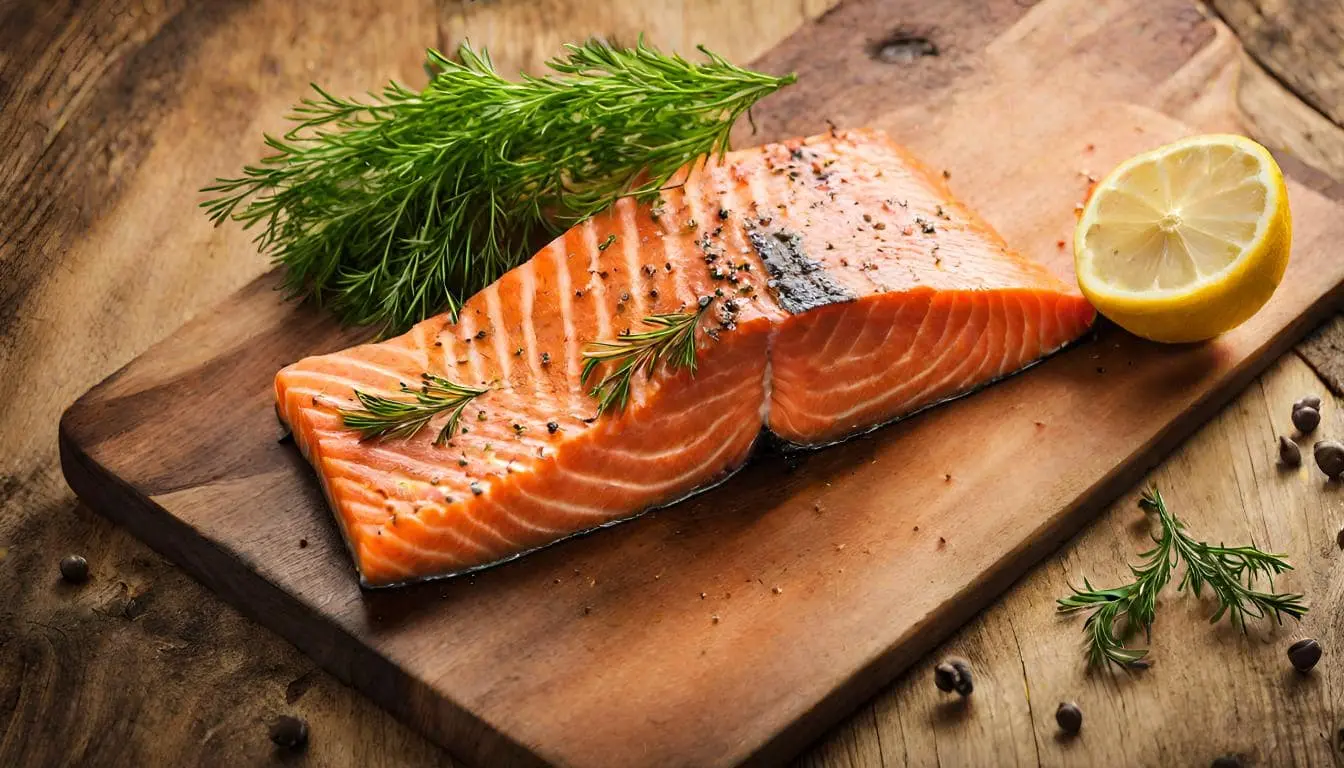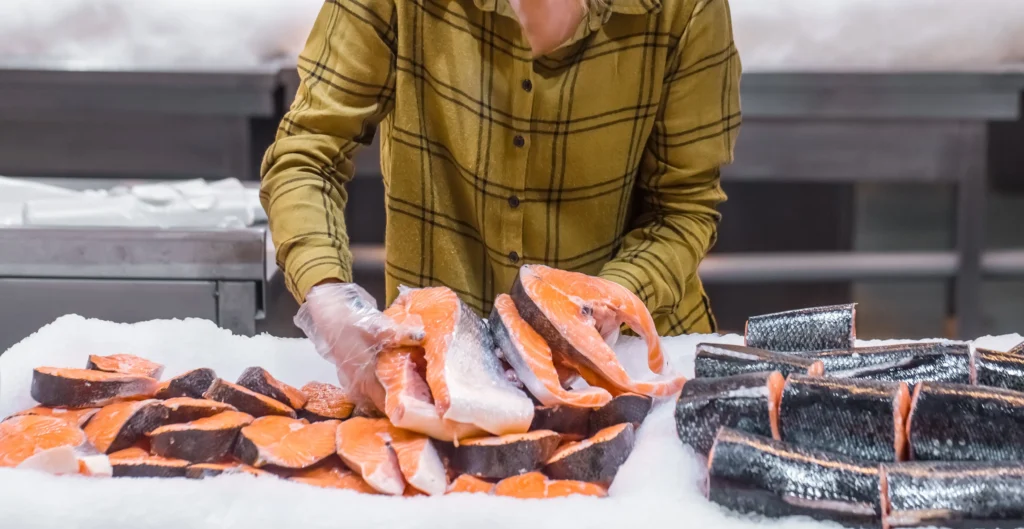Cooked Salmon Storage
Ah, salmon! This pink-hued delight isn’t just a treat for the taste buds but a bounty of nutrition. However, proper storage is key to savoring its goodness. You’ve probably pondered over questions like, “How long does cooked salmon last in the fridge?” or “What’s the best way to store it?” Well, you’re in luck! We’re about to embark on a deep dive into the world of cooked salmon storage.
Importance of Proper Storage
Let’s face it, nobody likes wasted food or, worse, food poisoning. Storing cooked salmon correctly is crucial for maintaining its freshness, flavor, and nutritional value. With optimal storage conditions, you can keep your salmon safe and scrumptious for days.
Overview of the Article
In this article, we’ll explore everything from the USDA guidelines on refrigeration to creative ways to jazz up your leftover salmon. We’ll also unravel the telltale signs of spoilage, ensuring you never bite into anything but the best. And don’t fret; we’ll sprinkle in some fun facts and expert tips to keep things lively!
So, whether you’re a salmon aficionado or just looking for practical storage tips, this article has got you covered. Let’s keep that cooked salmon in tip-top shape!
Shelf Life of Cooked Salmon Storage
How Long Does Cooked Salmon Last in the Fridge?
Let’s tackle a question that’s on every salmon lover’s mind: “How long can my cooked salmon hang out in the fridge before it turns into a culinary no-go?” Well, the answer isn’t as straightforward as you might think. It’s like a dance between time, temperature, and technique.
Factors Affecting Shelf Life
First up, let’s talk about the shelf life influencers. The freshness of the salmon when cooked, the cooking method, and how quickly it’s refrigerated all play pivotal roles. If your salmon had a longer stint at room temperature before finding refuge in the fridge, its shelf life might be shorter. Also, the way you cook it—grilled, baked, or poached—can impact how well it keeps.
USDA Guidelines
Now, let’s get official with the USDA guidelines. These food safety experts suggest that cooked salmon should be consumed within 3 to 4 days when stored in the fridge. This timeline is a safe bet to avoid the risk of foodborne illnesses. Remember, when it comes to food safety, it’s better to be safe than sorry!
Optimal Storage Conditions
So, how do we ensure our cooked salmon stays in the pink (or orange) of health? The answer lies in optimal storage conditions. Refrigerate your salmon within two hours of cooking. Keep it in a shallow airtight container or wrap it snugly in aluminum foil or plastic wrap. This practice helps in warding off bacteria and maintaining the quality of the fish. And here’s a fridge hack: store your salmon in the coldest part, usually at the back, far away from the door’s frequent temperature changes.
Storage Techniques
Best Practices for Storing Cooked Salmon
Storing cooked salmon correctly is more than a culinary practice; it’s an art. Let’s dive into the best methods to keep your salmon fresh, flavorful, and safe to eat. With these storage techniques, you can extend the life of your delicious fish and make the most of your leftovers.
Refrigeration Tips
The fridge is your cooked salmon’s best friend, but only if used correctly. Firstly, don’t let your salmon lounge at room temperature for too long. Ideally, it should be refrigerated within two hours of cooking. This reduces the risk of bacterial growth which can spoil the fish. Once in the fridge, place your salmon in a shallow airtight container or wrap it tightly in plastic wrap or aluminum foil. This not only keeps bacteria out but also prevents the salmon from drying out. Remember, keeping it at the back of the fridge, where it’s coldest, is a pro move!
Freezing and Thawing Methods
Freezing cooked salmon is a game-changer for extending its shelf life. When freezing, wrap the salmon tightly in plastic wrap, then place it in a freezer bag or an airtight container. This prevents freezer burn and preserves the quality of the fish. According to the USDA, cooked salmon can be frozen for up to 2-3 months. When it’s time to thaw, transfer it to the refrigerator and let it thaw overnight. Avoid thawing it at room temperature, as this can encourage bacterial growth.
Vacuum Sealing for Longevity
For the ultimate longevity hack, consider vacuum sealing your cooked salmon. This method removes air from the packaging, reducing the risk of freezer burn and extending the shelf life of the salmon to up to six months in the freezer, as highlighted by sources like The Grilling Dad and Chef’s Resource. Vacuum sealing is particularly useful if you’ve cooked salmon in bulk and want to enjoy it over a longer period.
Identifying Spoilage
Signs That Cooked Salmon Has Gone Bad
Knowing when your cooked salmon has gone past its prime is essential for food safety. Let’s dive into the key indicators that signal it’s time to say goodbye to your leftover salmon. These signs are your armor against the risks of foodborne illness.
Smell Test
The first and often most apparent sign of spoilage is the smell. Fresh salmon has a mild, sea-like aroma. However, if your cooked salmon emits a sour or rancid odor, it’s a clear sign that it has gone bad. This change in smell is a result of bacterial growth, and it’s a definite signal that the salmon should not be eaten. Trust your nose; if it smells off, it’s time to toss it out.
Visual Inspection
Next up, take a good look at your salmon. Fresh, cooked salmon should have a vibrant pink or orange color, depending on the type. If you notice any discoloration, like a dull, grayish hue, or any visible mold, it’s a sign of spoilage. These visual changes can often accompany a slimy or mushy texture, further indicating that the salmon is no longer safe to consume.
Texture Analysis
Finally, feel the texture of the salmon. Fresh, properly stored cooked salmon should have a firm and flaky texture. If it feels slimy or unusually mushy, it’s a clear indication that the salmon has spoiled. This textural change often occurs alongside other signs of spoilage, like a foul smell or discoloration.
By keeping an eye (and nose) out for these signs, you can ensure you’re enjoying your cooked salmon at its best. Remember, when in doubt, it’s better to err on the side of caution and discard any salmon that shows signs of spoilage.
Health and Safety Considerations
Safety Tips and Health Benefits of Cooked Salmon
Cooked salmon is not only a delightful addition to your diet but also a powerhouse of nutrients. However, it’s crucial to handle and store it properly to reap its benefits while minimizing health risks.
Risks of Improper Storage
Improper storage of cooked salmon can lead to the growth of harmful bacteria, increasing the risk of foodborne illnesses. Salmon left at room temperature for too long or stored incorrectly in the fridge can become a breeding ground for bacteria like Salmonella or Listeria. These pathogens can cause symptoms ranging from mild gastrointestinal distress to severe health issues, especially in vulnerable populations. Always refrigerate cooked salmon within two hours of cooking and consume it within the recommended time frame.
Nutritional Value
Salmon is renowned for its high nutritional value. It’s a fantastic source of omega-3 fatty acids, which are essential for heart and brain health. Salmon is also rich in protein, vitamins (such as B12 and D), and minerals like selenium. Regular consumption of salmon can aid in reducing inflammation, lowering the risk of heart disease, and supporting overall health.
FDA Recommendations
The Food and Drug Administration (FDA) has specific recommendations regarding the consumption of fish like salmon. They advise up to 2-3 servings of low-mercury fish, including salmon, per week for most individuals. This guideline helps balance the benefits of consuming fish against potential risks from mercury exposure. Pregnant women and young children are advised to consume even lower mercury fish to avoid any potential health risks.

Reheating and Consumption of Cooked Salmon Storage
Properly Reheating and Consuming Stored Cooked Salmon
Reheating and consuming stored cooked salmon correctly is essential for both taste and health. Let’s delve into the best methods to bring your chilled salmon back to life while preserving its flavor and texture.
Reheating Methods
There are several effective ways to reheat cooked salmon while keeping it moist and delicious.
- Oven: Preheating your oven to a low temperature, around 275°F (135°C), is a gentle way to warm the salmon. Place the salmon in a baking dish, lightly covered with foil, and heat for about 15 minutes or until it reaches an internal temperature of 145°F (63°C). This method helps retain the moisture and flavor of the salmon.
- Microwave: If you’re short on time, the microwave can be a handy tool. Cover the salmon with a damp paper towel and use a lower power setting to avoid drying it out. Heat in short bursts, checking regularly until it reaches the desired temperature.
- Stovetop: For a quick reheat, use a skillet on low heat. Add a small amount of oil or butter to keep the salmon moist. Gently heat the salmon until it’s warmed through.
Ideal Consumption Temperature
The ideal internal temperature for reheated cooked salmon is 145°F (63°C). Using a food thermometer to check the temperature ensures the salmon is heated safely and maintains its quality. This temperature is recommended by food safety authorities to eliminate any harmful bacteria.
Cold Consumption
Cooked salmon can also be enjoyed cold, straight from the fridge. It’s a delicious addition to salads, sandwiches, or as a protein boost in your favorite dishes. Cold consumption is safe as long as the salmon has been stored correctly and is consumed within the recommended time frame.
Creative Uses of Leftover Salmon
Innovative Recipes Using Leftover Cooked Salmon
Leftover cooked salmon offers a versatile and flavorful base for a variety of dishes. Let’s dive into some creative ways to repurpose your leftover salmon into mouthwatering meals.
Salad Ideas
Leftover salmon makes a fantastic addition to salads, adding a rich, savory element that pairs well with fresh greens.
- Salmon Caesar Salad: Flake your cooked salmon and toss it into a classic Caesar salad for a protein-packed lunch.
- Avocado and Salmon Salad: Combine chunks of salmon with avocado, cherry tomatoes, and a light vinaigrette for a refreshing and nutritious meal.
These salad ideas are not only quick and easy but also bring a delightful twist to your regular greens.
Pasta Dishes
Transform your cooked salmon into a hearty dinner with these pasta ideas.
- Creamy Salmon Pasta: Mix flaked salmon into a creamy sauce, then combine with your favorite pasta. Add peas or spinach for an extra veggie boost.
- Salmon Pesto Pasta: Toss cooked salmon with pasta and homemade or store-bought pesto for a deliciously simple dish.
Pasta dishes like these are great for a comforting dinner that’s both satisfying and easy to prepare.
Breakfast Options
Start your day with a salmon-infused breakfast that’s both nutritious and flavorful.
- Salmon Scramble: Mix flaked salmon into scrambled eggs with herbs and a sprinkle of cheese for a protein-rich breakfast.
- Salmon Avocado Toast: Top your toast with sliced avocado and pieces of salmon for a trendy and healthy breakfast option.
These breakfast ideas are perfect for using up small amounts of leftover salmon, ensuring nothing goes to waste while enjoying a delicious start to your day.
FAQs
Expert Answers to Common Queries
- How Do You Tell if Cooked Salmon is Safe to Eat?
- To determine the safety of cooked salmon, first, smell it. It should have a fresh, mild aroma. Any strong, unpleasant, or sour odor suggests spoilage. Visually inspect for signs of mold or discoloration. Fresh cooked salmon retains a vibrant pink or orange hue. Finally, feel the salmon. It should be firm and moist, not slimy or sticky.
- Is a Week-Old Cooked Salmon in the Fridge Safe to Eat?
- It’s generally unsafe to eat cooked salmon that has been in the fridge for a week. The USDA recommends consuming it within 3-4 days to ensure safety and quality. After this period, the risk of bacterial growth and foodborne illness increases.
- Can You Refreeze Cooked Salmon That Has Thawed?
- It’s best to avoid refreezing cooked salmon, especially if thawed at room temperature or in warm water, as this can encourage bacterial growth. However, if you thawed it in the refrigerator and it hasn’t been at room temperature for more than two hours, you can refreeze it.
- What Is the Maximum Time Cooked Salmon Can Sit at Room Temperature?
- You should not leave cooked salmon at room temperature for more than 2 hours. In temperatures above 90°F, reduce this time to just one hour. Beyond these limits, harmful bacteria growth increases, making the salmon unsafe to eat.
- What’s the Best Method to Reheat Cooked Salmon?
- Reheat cooked salmon gently to retain moisture and texture. Use the oven or stovetop for the best results. In the oven, wrap the salmon in foil and heat at 275°F until it reaches 145°F internally. On the stovetop, heat it gently in a pan over low heat. For microwave reheating, cover it with a damp paper towel and use a lower power setting.


